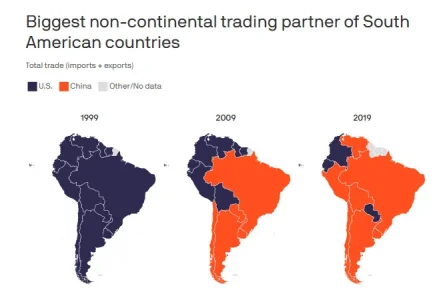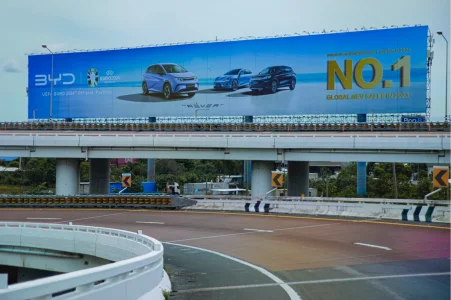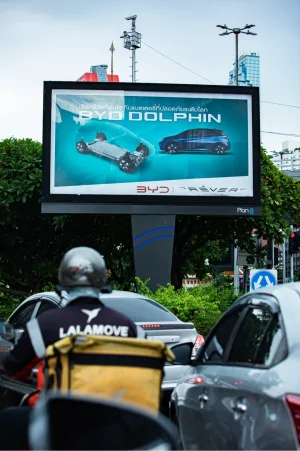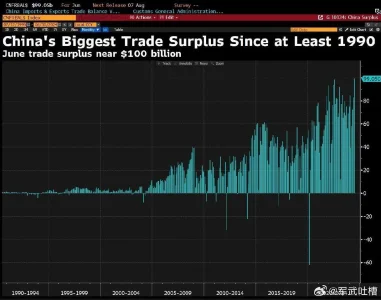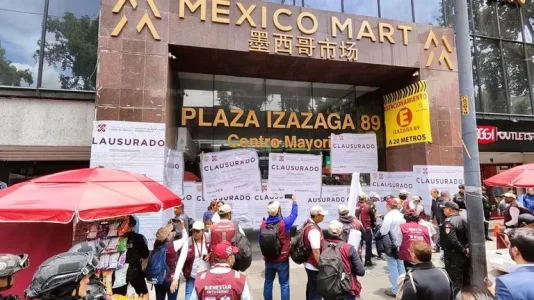- Joined
- Jul 3, 2024
- Messages
- 1,697
- Likes
- 2,286
China never will control south America you are just dreaming, for starters while China has invested in Brazil, many projects have Brazilian counter parts, and some projects are pipe dreams.
Tierra del Fuego: controversy over failed Chinese port plan
Cristina Papaleo
06/21/2023June 21, 2023
China's technological advance in Argentina is not new, but the cancellation of the project for a port and an industrial hub in Tierra del Fuego revived the controversy. What environmental and economic dangers does it pose?

Tierra del Fuego: polémica por fallido plan de puerto chino – DW – 21/06/2023
El avance tecnológico de China en Argentina no es nuevo, pero la cancelación del proyecto de un puerto y un polo industrial en Tierra del Fuego reavivó la polémica. ¿Qué peligros medioambientales y económicos alberga?
Even as the Petro Government seeks to diversify its partners, growing political, security and contracting risks affect Chinese companies' perception of the country, report warns

Colombia no está preparada para el bum de inversión china
A pesar de que el Gobierno Petro busca diversificar sus socios, los crecientes riesgos políticos, de seguridad y de contratación afectan la percepción de las empresas chinas sobre el país, advierte un informe
OCTOBER 10, 2023
China's dreams of expanding its influence and participation in Latin America and the Caribbean through commercial projects and infrastructure are clouded by being involved in problems of corruption, financial difficulties and criticism for the quality of its construction. These Chinese fantasies have become nightmares and horror stories for many countries.
Dragon Mart
In 2015, Mexico canceled the Chinese Dragon Mart megaproject in Cancún, Quintana Roo, due to the lack of authorizations for its construction and the impact on ecosystems and coastal roads in wetland areas, reported the Mexican magazine Proceso.
This project, which began in 2013 and faced opposition from local authorities, environmentalists, business and social organizations, had planned 722 homes, 20 commercial warehouses and 3,000 stores, on an area of 561 hectares, reported the Mexican newspaper El Financiero.
Coca Elbow Sinclair
The Ecuadorian government and the Chinese contractor Sinohydro remain in talks to resolve the problems that prevent the official reception of the Coca Codo Sinclair hydroelectric plant, despite the fact that it began operating in 2016, BNamericas reported on May 4.
Sinohydro carried out the construction of the dam at a cost of close to USD 3.44 billion, while Ecuador invested an additional USD 600 million in the transmission lines, he said.
The Government refuses to formalize the reception of the plant, due to the existence of thousands of irreparable cracks and other problems that, in 2018, led the Comptroller's Office to conclude that the work did not meet the criteria for reception of public works, he detailed. .
Bogotá Metro
The Bogotá Metro Company, in Colombia, imposed a fine of USD 196,000 on the Chinese concessionaire Metro Línea 1, which builds part of the first line of Bogotá's mass transportation system, for failing to deliver studies and preliminary designs that they should have delivered. at the end of 2022, reported the newspaper El País.
He indicated that the contract for the construction of the first line was signed in November 2019 with the Chinese consortium APCA Transmimetro, who committed to completing the work in 2028. Line 1 will be 23.6 kilometers and is currently only 20 kilometers advanced. percent. The Chinese consortium argued for variables not considered and will appeal the sanction, the Andrés Bello Foundation announced on July 27.
Rositas Hydroelectric Plant
In 2018, Bolivia suspended the Rositas hydroelectric project due to opposition from affected communities, the environmental journalism platform Mongabay reported. In January 2022, the companies China Three Gorges and China International Water & Electric did not provide alternatives for the populations that were going to be flooded.
The hydroelectric project had the objective of being built on the Río Grande, in Santa Cruz, near the confluence with the Rositas River, in an area of 150,000 hectares. It was expected to flood an area of 449 km2, equivalent to three times the urban area of La Paz, he explained. The project was financed by more than $1.5 billion from China's Eximbank.
Despite the suspension, there is a possibility that the Rositas project will be reactivated. Mongabay pointed out that this controversial project, with more than five decades of history in Bolivia, has not been subjected to an environmental impact study nor has it gone through the prior consultation process. To date, each Bolivian government has attempted to reactivate it.
small window
“The dynamics that cast shadows on Chinese aspirations negatively impact the international reputation of these companies. We are not alone in observing project failures in the region, since failures of Chinese projects are also recorded in South Asia and Africa,” said Cesarin. “In Latin America, the perception towards China has deteriorated due to the multiple problems with the infrastructure they build. “This raises questions about previous strategic alliances with Beijing, as it often denies solutions to these problems.”
“It is important to consider that all this could open a small window of opportunity for alternative projects by European companies and US infrastructure in the future,” he concluded.

Cuentos chinos en Latinoamérica
Los sueños de China de ampliar su influencia y participación en Latinoamérica y el Caribe a través de proyectos comerciales e infraestructura, son empañados al verse envueltos en problemas de corrupción, dificultades financieras y críticas por la calidad de sus construcciones. Estas fantasías...
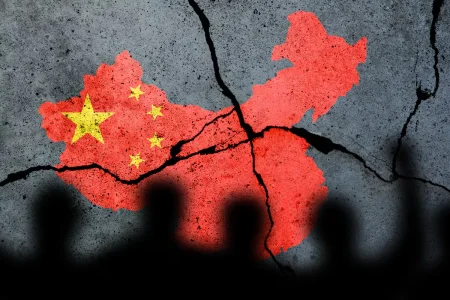
“First, China enters in a friendly and kind manner, saying that the work will be carried out in a sustainable way, respecting the communities and the environment. But then, once the work is underway, the fulfillment of those initial commitments takes a backseat,” she stated. Clear demonstration of Chinese doublespeak
Fiambalá's case is not the only one, neither in the country nor in the region. For example, the construction of the Cepernic and Néstor Kirchner dams in Santa Cruz, Argentina, was always a focus of conflict. The dangers, according to specialists, are several: from the disappearance of the macá tobino specimens, a unique species in the world, to the impact of the Perito Moreno Glacier, including the burial of more than 170 archaeological sites almost 10 thousand years old. antiquity. The cost is high.
In Peru, local associations sent a letter to the Chinese embassy, complaining about similar damages caused by three works financed by China: the Toromocho Mining Unit (UMT), of the company Aluminum Corporation of China (CHINALCO), owner of Minera Chinalco Perú S.A., financed by the China Development Bank and the Export-Import Bank of China; Marcona Mine of Shougang Hierro Perú S.A.A, a subsidiary of Shougang Corporation, financed by the Industrial and Commercial Bank of China and DBS Hong Kong Bank; and the Las Bambas Mining Project of the company Minerals and Metals Group MMG Limited, Guoxin International Investment Co. Ltd. and CITIC Metal Co. Ltd., financed by the China Development Bank, Export-Import Bank of China, Industrial Bank and Commercial of China and the Bank of China. According to the associations, "all projects affect environmental protection. In addition, there are several negative impacts on indigenous peoples and the livelihoods of local communities, including housing, labor rights, persecution of environmental defenders, among others." Conclusive and forceful.
Here at El Archivo we told you months ago about another case, in Bolivia. The complicity of the Bolivian state and the Chinese government for gold exploitation puts the population of local communities at risk. Those who live near mining areas suffer consequences derived from the serious levels of pollution. Data on mercury contamination in five indigenous towns in the Beni River basin. There were already previous reports that the Esse Ejja population had levels of this toxic well above the limit considered “without risk” - 1 part per million (ppm) - by the United States Environmental Protection Agency. However, the most recent data collected by the Central Indigenous Peoples of La Paz (CPILAP) indicate that the members of five indigenous peoples that inhabit Madidi have toxic levels of mercury in their bodies. All said.
Cases are multiplying throughout the region. But the response is always the same: silence on the part of China and local governments.

China: el lado oscuro del financiamiento a América latina
Los miles de millones de dólares que China ofrece a países emergentes tienen una contracara muy peligrosa: secretismo, tasas altas e impacto ambiental y social.
Last edited:

